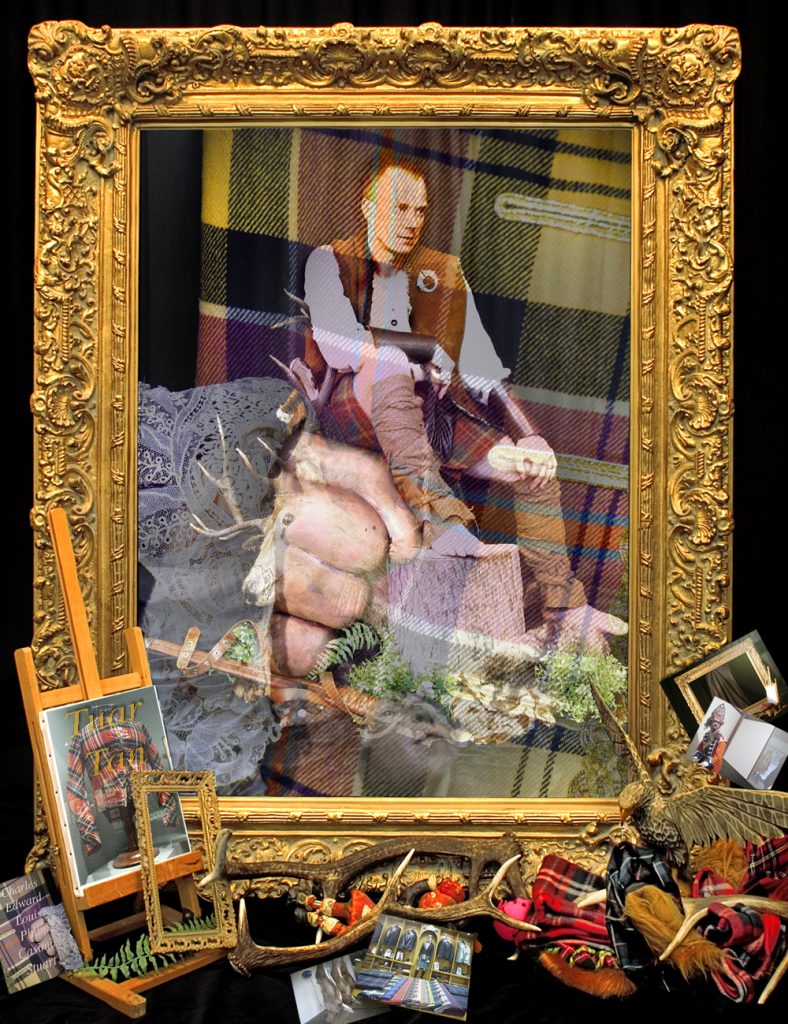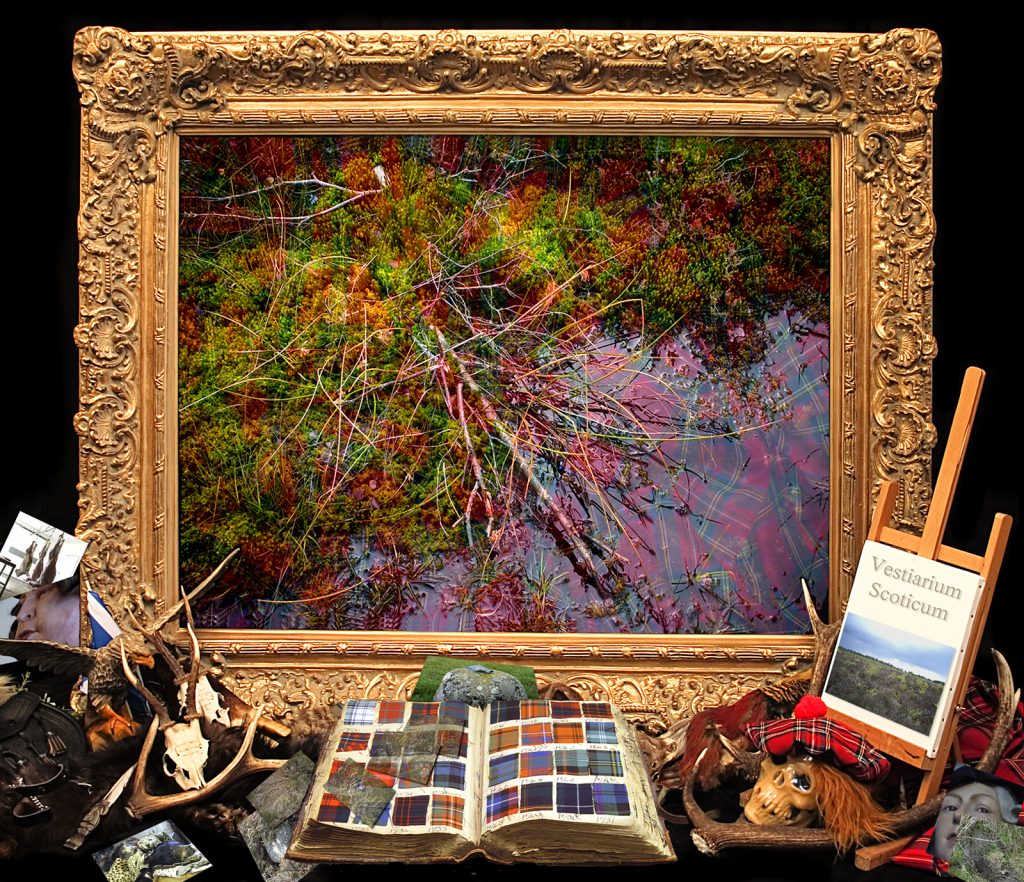This blog was originally posted on the National Galleries for Scotland website during my exhibition ‘Jacobites by Name’ at the Scottish National Portrait Gallery, 14/11/15 – 28/3/16.

‘Jacobites by Name’ is a project which had been on my mind for some considerable time before it finally became a realised installation at the Scottish National Portrait Gallery. In fact it first came to mind as an idea when I was commissioned (alongside Graham Fagen) to make work for an episode of a BBC series called ‘A Digital Picture of Britain’ in 2005. The episode was called ‘The Glorious Highlands’ and Graham and I were given a pair of low-end compact digital cameras and asked to make photographic artworks on that theme. I chose to make a triptych based around ‘snaps’ I made at three distinct sites: the Culloden Battlefield Visitor Centre, a ‘Highland wear’ store in Leith and a venison processing factory in Bonar Bridge, Sutherland. My idea was to make a series of works entitled ‘Vestiarium Scoticum’ which would refer to the book of ancient clan tartans published in 1842 based, it was claimed, on an ancient manuscript belonging to Charles Edward Stuart.
The book was a forgery, perpetrated by the ‘Sobieski Stuart’ brothers who masqueraded as grandsons of the prince. The theme of spurious ‘tartanry’, emblematic of a romanticized version of history and serving as a substitute for a lost authentic Scottish culture, is a theme that recurs throughout my work, becoming more prevalent since my exhibition at the Scottish National Portrait Gallery in 2001 entitled ‘Ossian, Fragments of Ancient Poetry’.
The central image in this multiple photomontage depicts a section of the boggy field of Culloden, somewhere between the Jacobite and Hanoverian lines. A bolt of Stewart tartan fades into the bog, suggesting the early origin of tartan in dyes obtained from the land. The multiple layers of images, which spill out from this centre, allude to the gradual classifying and dubious codification of clan tartans during the 19th century period of Victorian ‘Balmoralisation’ of highland culture. A foil to this theme emerges on further contemplation of the detail, which alludes to the tragic human consequences of these historical and cultural shifts.

On completion of these three works I wondered if perhaps there wasn’t more research that could be done exploring this hinterland of an imaginative vision of a Scotland that never was, and the forces behind it. I began to experiment with further Jacobite imagery until an application for funding to the Leverhulme Trust allowed a period of concentrated research into existing artifacts (paintings, glassware, optical portrait devices, textiles, material culture etc.) found in the extensive collections in the National Galleries and in Inverness Museum and Art Gallery (amongst others).
Through this extensive research I gradually came to envisage a series of photographic works alongside a collection of more esoteric objects such as anamorphosis, optical devices, glass and ceramic works etc. which would explore the complex symbolism and surrounding myths associated with the Jacobites. These works would investigate the evolution of mythologized and factual representations of the Jacobites and Highlanders developed over the last three hundred years, and re-evaluate their influence on contemporary Scottish national identity. Further discussion with the Scottish National Portrait Gallery senior curator, Julie Lawson led to a proposal for the resultant works to be displayed as a form of intervention within the existing collection in the Jacobite room at the SNPG.
And this is how the project began…

